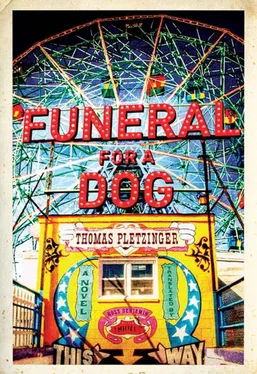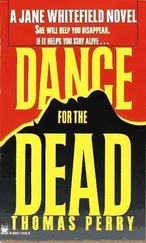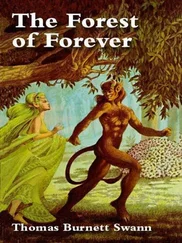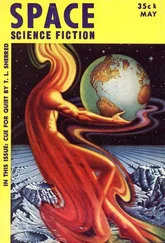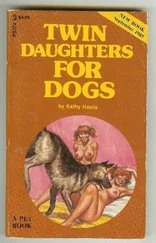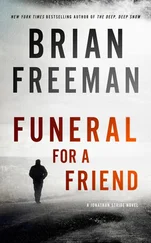the deeper water
I go to the bathroom two more times, I lean on the scrawl-covered tiles and order water when I return (the change accumulates next to the notebook). Between retches I search for words for my next decisions. I’m a journalist, I say to the waitress, I’m researching a story. I should leave, I could stay, I could examine Svensson’s manuscript, possibly his attempted autobiography, maybe his Speculations about Felix . I would sleep with Tuuli (I would have decided). I observe a fisherman on the shore and, later, Ceresio , the name of the ferryboat that travels between Lugano and Porlezza. A couple disembarks, the man is carrying a backpack, the woman is holding a child. A few boxes and cartons are thrown onto the metal dock (the mail). The flags along the shore are hanging, the blind Prosecco drinker’s white hair is lying straight (the age of the people on the quay). My body isn’t calming down. The lakes of Ticino, Elisabeth said on Friday on the way back from the restaurant, are deep, in winter the snow never stays there, and in summer they keep their shores pleasantly cool. Lake Lugano is a stable body of water. Not all that back and forth like the Atlantic, not all that burbling like the Baltic Sea. It can be relied on, Mandelkern. In the early afternoon Ceresio could take me back to Lugano, but I remain seated (I myself can’t rely on myself).
“The Master of Chickens
(Profile of Dirk Svensson/about 270 words)”
On the pier it’s almost windless. Scattered clouds hang around the peaks of the Ticino mountains on the shore of Lago di Lugano. Under the lindens and palms of the lakeside promenade walk extraordinarily well-dressed women and men, radiant with worldliness, they drink Campari under cypresses. Lugano is beautiful, and the Ticino city knows it too. It was not for nothing that the grandmasters of German literature strolled here. Hermann Hesse wrote for fourteen years in Montagnola in the hills overlooking the city and painted his famous watercolors, and Thomas Mann was particularly fond of drinking his Sunday tea in the cafés of the Piazza della Riforma. Two generations of writers and one world war later, this city remains a hub for rich, beautiful, and smart people. And then, true to style, Dirk Svensson appears for the interview with his boat — as might be expected from a successful author. His first children’s book struck the nerve of the times: The Story of Leo and the Notmuch has already sold 100,000 copies, and sales are projected to more than double. But of course the first impression is deceptive: instead of the expected light summer suit, Svensson is wearing an old T-shirt, his boat is a wooden tub with an outboard. In the stern sits a black, ugly dog, a kind of German shepherd with a gray spot on his chest and only three legs. Dirk Svensson is a woodcutter in a fishing trawler, exactly as I imagined a media-shy children’s book author. “Climb aboard,” says Svensson, “come along!” The small wooden boat named Macumba rocks alarmingly as I…
It can’t go on like this, Mandelkern!
About Osteno? I’m not writing about Osteno, I explain to the waitress, the story only takes place here, it’s a profile of a children’s book author residing here. Residing? The waitress doesn’t know the word. Yes, I say, Dirk Svensson. Si , she says, Svensson and Kiki are the only foreigners who stay well into autumn. I feel nauseous again, suddenly the waitress’s sentences contain incomprehensible words and names. They’re artists, she says, and so only half tourists, the other half belongs here. They’re famous in some way, that much she knows, the only celebrities on this end of the lake ( lo scrittore , she says, l’artista ). Despite that, the two of them have stayed normal, says the waitress, as she prepares the coffee and refills the card players’ glasses with Prosecco, welcome guests, thank God (the roar of the espresso machine grates off a layer of my composure). The waitress points behind her. On the wall: a framed mirror (image: the intact New York skyline in black and pink), a signed poster of Valentino Rossi in front of a motorcycle (signature printed on). Between them a picture that also must have been painted by Kiki (Lua and a dark-haired toddler sleeping between red chair legs). That’s Lua, says the waitress, il buon samaritano a tre gambe . The dog is faithful, she says, how do you say? Faithful until death? Obbedienza cieca ? Last summer Lua could still walk, and the three of them came here for coffee every day. The waitress imitates Lua’s bark (she only manages his cough, she smokes too much). Isabella was born in Lugano too, sweet little Isabella (I don’t ask who Isabella is).
False assumption: the Italians here don’t want Svensson.
The waitress lights a cigarette, pulls out a photograph from under the counter and asks: is your book a sad story? Take this, she says and hands me the photo, a souvenir. My reply: I’m writing for a newspaper, for a book you need years and a real story. In the photo: Osteno in deep snow, two children playing under the small but already pruned lindens along the shore, the bar in a real house: “Caffè del Porto, Osteno, Invierno 1939/40.” The waitress points to the bar furniture, to the pictures on the wall, to the tacky sofa, to the pinball machine, to the toy vending machine, to the card-playing men, out the window, to the red chairs, to the lake, to the opposite shore. Newspaper or book, she says, Osteno is a good place for sad stories.
What I’ve found out:
Elisabeth wants a profile of the children’s book author Dirk Svensson, so I flew to Milan. Svensson’s dog Lua really does have only three legs, he’s old and will soon die. Felix Blaumeiser is already dead. Svensson didn’t draw the pictures in his children’s book himself, he’s not an illustrator, all the pictures are by Kiki Kaufman. Kiki Kaufman is not here on the lake. Svensson seems to have been expecting Tuuli and the boy. Svensson’s reclusiveness is his concentration. Svensson is a man of rituals. He cultivates his own vegetables, he breeds chickens, sometimes he takes the boat to the supermarket, otherwise he doesn’t go anywhere. Under his desk is Blaumeiser’s suitcase, in it is Svensson’s Astroland manuscript. I’m a slow reader, but I devoured it in a night. I’m piecing together Svensson from what I see and hear and read, but the manuscript is lying unfinished in the suitcase (Svensson is a memory animal). The Story of Leo and the Notmuch is taken from his life as much as Astroland (this line of thought is naïve biographism, Elisabeth would say, you yourself should know that with your literary studies minor, art and life are two completely different things). I take Svensson’s stories at face value, even though I should be more careful (my considerations are based on the interpretive principle of the critic Louis Simpson: “my rule has been to give these matters as much importance as he himself gave them”). Now I want to get to the bottom of his strangeness after all. Svensson is no stranger than I am. I should investigate Tuuli’s divided love (either Blaumeiser is the boy’s father or Svensson is), Felix Blaumeiser’s drinking habits, his carelessness, his death, finally Svensson’s tendency to flee.
write or leave?
In the early afternoon I’m still sitting in the Bar del Porto in Osteno (on the brink of vomiting for the fourth time). Another attempt to decide, another attempt to fulfill my assignment and write the profile as planned (another attempt to go back to Elisabeth). I could take an early train home and start the profile from scratch on the way. I would write the last lines as the train went through the Free Port of Hamburg, past the wholesale fruit market, the warehouse district, the Deichtorhallen galleries. I should could would, but my stomach wants to wring itself out, my body wants to stay. On the table in front of me lie the notebooks and the change, the clock in the Bar del Porto shows 1:15 PM (the smell of toast and cigarettes). In a few minutes the ferry will dock, pick up passengers and cast off again. I have to decide. The coins would be enough for a phone call, I think, I could ask Elisabeth for another day (I would only have to scrape the chewing gum off the pay phone).
Читать дальше
